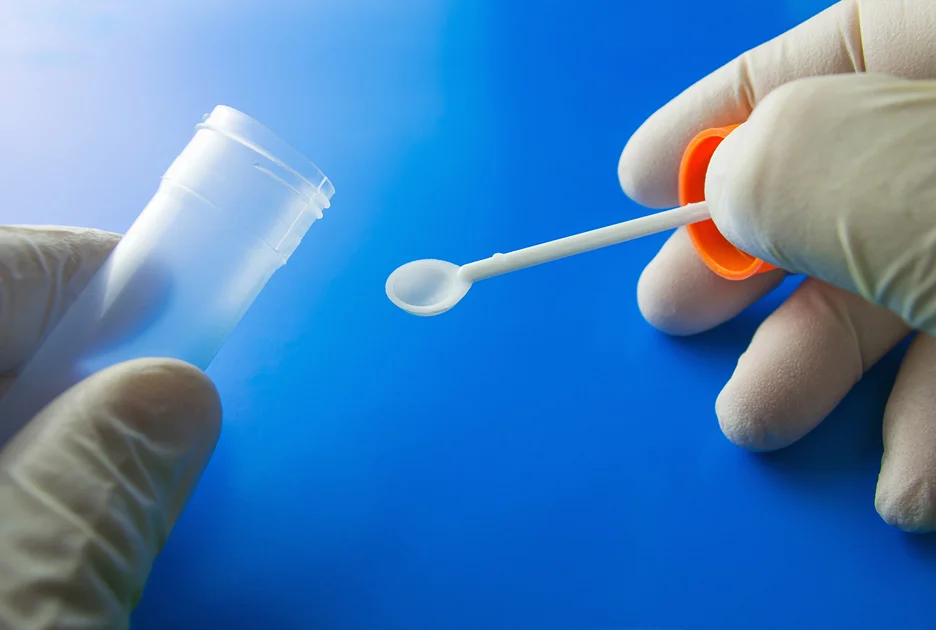Decoding the Liver’s Connection to Histamine Intolerance: A Comprehensive Guide to the DAO Enzyme
Did you know that the diamine oxidase or DAO enzyme plays a crucial role in breaking down histamine and clearing toxins from your liver? This enzyme is primarily found in the liver and intestines, where it helps regulate histamine levels in the body and prevent excess buildup.
When DAO isn’t able to keep up with the histamine in your diet or gut, it can lead to unpleasant symptoms like bloating, digestive issues, hives, and inflammation. This condition is known as histamine intolerance. By producing and releasing adequate amounts of DAO, especially in the liver, you’re able to properly metabolize histamine and other waste products.
DAO enzymes are essentially your liver’s natural defense mechanisms and detoxifiers. They help eliminate harmful compounds, keep your histamine in check, and support an overall healthy metabolic process. For this reason, balancing DAO activity in the liver is so important for well-being and optimal health.
Histamine and Its Effects on Health
Histamine is an important signaling molecule in the body that helps regulate many vital functions. As part of your immune system, histamine helps trigger an allergic response to protect against foreign substances like bacteria or parasites entering the body. In appropriate amounts, histamine also helps control inflammation, gut motility, blood pressure, sleep-wake cycles, and the release of stomach acid.
However, too much histamine in the system can lead to unpleasant symptoms known as histamine intolerance. Excess histamine may cause digestive issues like bloating, abdominal pain, diarrhea or constipation, nausea, and loss of appetite.
It can also contribute to skin problems such as hives, itching, and rashes. And in severe cases, high histamine levels are linked to migraines, rapid heart rate, muscle spasms, and even depression or anxiety.
Living with histamine intolerance means constantly avoiding high-histamine trigger foods and managing symptoms, which can significantly impact your quality of life. Simple pleasures like enjoying a nice glass of wine, having casino night pizza with friends, or grabbing a fresh seafood salad become difficult or impossible. When histamine overload strikes, daily activities grind to a halt as you spend hours resting or applying calamine lotion to your hives.
The good news is, keeping histamine in balance through enzymes like DAO, a balanced diet, and other self-care strategies can help alleviate symptoms and reclaim your quality of life. Histamine tolerance is absolutely achievable when you understand the underlying mechanisms at play and take the necessary steps to support optimal health.
DAO Enzyme Activity in the Liver and Intestinal Mucosa
The diamine oxidase or DAO enzyme plays a crucial role in regulating histamine levels through degradation and detoxification. It is found in high amounts in the liver and intestinal mucosa, where it helps break down excess histamine and maintain balance.
In the liver, DAO helps clear histamine from the bloodstream after it’s released from gut tissues or during immune response. It helps prevent histamine buildup that could lead to liver dysfunction or damage. In the intestinal mucosa, DAO protects against excess histamine deposition and permeability issues that can contribute to leaky gut and inflammation.
DAO depends on the release of histamine from certain immune cells called mast cells. Mast cells store histamine and release it in response to foreign substances like bacteria, parasites, or allergens to trigger an immune response. While histamine release is important for immunity, uncontrolled or chronic activation of mast cells leads to too much histamine circulating in the body.
This is where DAO and its activity in the liver and gut become crucial. By rapidly degrading excess histamine, DAO helps resolve immune response and return the body to homeostasis. It prevents histamine from causing inflammation, digestive issues, skin problems or other intolerances that result from chronically high levels.
In summary, DAO is essential for regulating histamine through synthesis and breakdown in key areas of the body. Balanced DAO activity helps ensure optimal immune function without negative consequences from excess histamine production and release. Understanding the interconnected roles of histamine, mast cells, and DAO provides insight into how maintaining this balance contributes to health and well-being.
Dietary Influence on Histamine Levels
The histamine content of foods and beverages you consume has a significant impact on your body’s overall histamine levels. Certain foods are high in naturally occurring histamines while others contain histamines produced during fermentation or ripening.
A diet high in histamine-releasing or high-histamine foods can overwhelm your capacity to break it down, leading to excessively high levels. This contributes to histamine intolerance symptoms like bloating, rashes, migraines, and digestive issues. Foods to limit or avoid include:
- Fermented foods: Yogurt, kefir, sauerkraut, kimchi, miso, tempeh, cheese, beer, wine
- Ripened/aged foods: Cheese, nuts, cured meats, anchovies, fermented bean paste
- Canned fish/shellfish: Tuna, sardines, shrimp, lobster
- Chocolate
- Apples
- Spinach
In contrast, a low-histamine diet focuses on fresh, unprocessed foods that are naturally low in histamines. This helps reduce excess levels and relieve intolerant symptoms. Benefits of a low-histamine diet include:
| Benefits of a low-histamine diet | Description |
| Improved digestion | Easily digested foods promote gut health and barrier integrity. |
| Balanced inflammation | A balanced diet supports an appropriate inflammatory response. |
| Healthier skin | Reduced histamine means less irritation, rashes, hives or itching. |
| Improved sleep | Stable histamine levels at night lead to uninterrupted, restful sleep. |
| Improved mental well-being | Managing root causes of symptoms leads to less stress, anxiety or depression. A low-histamine diet can also regulate mood and behavior. |
Gradually reintroducing foods to determine personal tolerance allows for flexibility and balance rather than elimination. With practice and patience, you can achieve histamine control and greater freedom in your diet and life.
Histamine Intolerance and Related Conditions
Histamine intolerance is linked to several interconnected health conditions related to inflammation, digestive issues, and immune response dysfunction. Some key connections include:
Irritable bowel syndrome (IBS)
Histamine intolerance and IBS share common symptoms like bloating, abdominal pain, diarrhea or constipation, and nausea. Managing excess histamine helps improve gut motility and reduce IBS flare-ups for some patients.
Inflammatory bowel disease (IBD)
Conditions like Crohn’s disease and ulcerative colitis involve chronic inflammation of the intestines which can lead to high histamine levels. A low-histamine diet may help decrease inflammation during active IBD periods.
Mast cell activation syndrome (MCAS)
Excessively activated mast cells release too much histamine, resulting in symptoms of allergic reaction and anaphylaxis. Reducing histamine triggers through diet and stress management supports MCAS stabilization.
Migraines
For those with migraines linked to histamine excess, balancing histamine through diet, supplements, and medication helps decrease migraine frequency and intensity. Things like avoiding aged cheeses, ripened nuts, cured meats, fermented foods, and wine can help.
Though these conditions have complex etiologies, a subgroup of patients may benefit from stabilizing histamine due to connections with inflammation, gut health, immune function, and mast cell activity. Diagnosing underlying histamine intolerance provides an opportunity to improve health through targeted diet and lifestyle changes.
Most physicians do not currently evaluate patients for excess histamine or related intolerances as a possible factor in their symptoms and condition(s). With a growing understanding of these links however, balancing histamine levels may emerge as an important therapeutic strategy, especially for scenarios of digestive or allergic distress.
Diagnosis and Treatment of Histamine Intolerance

Correctly diagnosing histamine intolerance and other contributing factors is crucial to developing an effective treatment plan. The diagnosis process typically includes:
Comprehensive health history and symptom review. Discussing symptoms, possible triggers, medical history, diet, stress, and lifestyle provides clues to underlying issues.
Blood tests. Tests may check inflammation markers, nutrient levels, food sensitivities or intolerances, hormonal balance, and more. This helps rule out other potential causes of symptoms before concluding excess histamine is the primary problem.
Stool tests. Stool tests can check for conditions like SIBO, Candida overgrowth, gut dysbiosis, and immune system dysfunction which can contribute to histamine overload.
Dietary trial. If excess histamine seems likely based on symptoms and information collected, an elimination diet trial removes suspected trigger foods one by one to identify problem foods. Reintroducing foods determines tolerance levels.
Treatment focuses on balancing histamine through diet, supplements, and medication as needed. Key strategies include:
| Treatment strategies for histamine intolerance | Description |
| Low-histamine diet | Focusing on fresh, unprocessed whole foods reduces excess histamine intake. Gradually reintroducing foods helps determine tolerance. |
| DAO supplementation | Taking supplemental DAO enzymes helps improve breakdown of excess histamine, especially important for those with deficiency. Dosing is based on condition severity and personal histamine levels. |
| Antihistamines/H2 blockers | For severe cases, OTC or prescription medication may help stabilize histamine during active symptoms. Used short-term under medical guidance until dietary changes take effect. |
| Reduce inflammation and support detoxification | Supplements like turmeric, omega-3s, bromelain, and vitamin C help lower inflammation from excess histamine. A healthy, balanced diet provides the nutrients needed for proper detoxification. |
| Stress management | Stress activates an inflammatory response and histamine release, so managing stress through exercise, yoga, meditation, or other practices is important. In addition, getting adequate sleep and minimizing exposure to environmental toxins can also support histamine balance and overall health. |
With correct diagnosis, an integrated treatment approach, motivation for making necessary changes, and time, most people with histamine intolerance can achieve significant relief of symptoms and greater histamine balance and tolerance.
Histamine intolerance is often lifelong, but with the right management strategies, it need not limit you.
Conclusion
In summary, the diamine oxidase or DAO enzyme plays a vital role in regulating histamine levels and maintaining overall health. Found primarily in the liver and intestines, DAO helps break down excess histamine released during immune response, digestion, and other bodily functions.
When DAO activity decreases or histamine intake outpaces breakdown, histamine can build up and lead to intolerance symptoms.
Recognizing histamine intolerance requires understanding the complex relationships between histamine, DAO, immune and inflammatory response, stress, diet, gut health, and more. Correct diagnosis is needed to determine if excess histamine, underlying conditions, nutrient deficiencies, food sensitivities or other issues are contributing to your symptoms.
An integrated approach using diet, supplements, medication, lifestyle changes and stress management based on underlying causes provides the most comprehensive solution.
Schedule a Free Consultation with SeeBeyond Medicine
Balancing your histamine levels through management of factors within and outside your control helps you achieve greater tolerance, relieve intolerant symptoms, and improve quality of life. Some simple self-help steps include reducing excess histamine intake, supporting detoxification, decreasing inflammation, and managing stress.
However, for severe or complex cases, consult with board-certified physicians, naturopaths, or nutritionists experienced in diagnosing and treating conditions related to immune and inflammatory dysregulation.
Histamine intolerance is real, and the good news is it can be managed to the point where most intolerable symptoms subside and you’re able to fully enjoy life again.
By making your health a priority, adopting a balanced approach, learning as you go, and using all the resources available to you, you absolutely can gain control of excess histamine and its effects. Staying diligent yet patient through what may be a long process will lead to the life you long to live once more.
In summary, remember the importance of the DAO enzyme, get the help you need to determine if excess histamine is really the issue, and commit to management strategies that keep your histamine balanced and your quality of life high.
